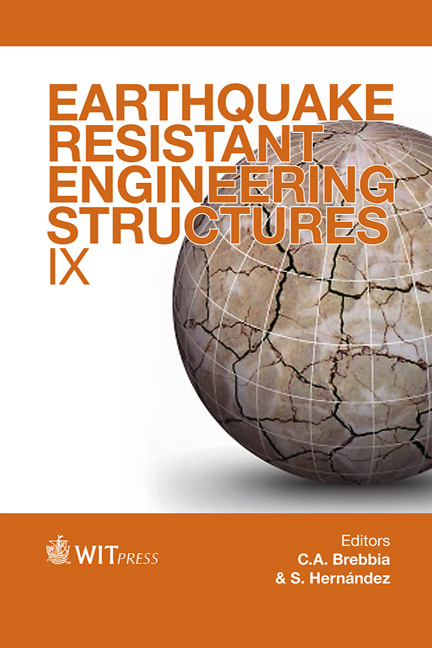Semi-active Control Design For Base Isolated Structures With Switching Damping Coefficient Of Oil Dampers
Price
Free (open access)
Transaction
Volume
132
Pages
12
Page Range
345 - 356
Published
2013
Size
1194 kb
Paper DOI
10.2495/ERES130281
Copyright
WIT Press
Author(s)
A. Fukukita & M. Takahashi
Abstract
In Japan, after the Hyogo-ken Nambu Earthquake in 1995, base-isolated structures spread rapidly. Now, there are about 2,800 base-isolated buildings (apartment complexes account for 45% and hospitals for 12%) and about 4,300 base-isolated houses in Japan. Base-isolation technology was effective in the Tohoku Earthquake 2011, off the Pacific coast. This paper presents the methods behind semi-active control design for base-isolated structures with oil dampers whose damping coefficient can be set in two levels: applying two different damping coefficients based on the proposed control design. The damping coefficients of the oil dampers are different to each other. The control objective is the reduction of both the displacement of a base-isolated layer and absolute acceleration of a base-isolated building, which are trade-offs against each other. The layered neural network with the Genetic Algorithm (GA) is applied to the semi-active control design. Absolute acceleration of the building and displacement of the isolated layer are the input signals of the neural network, and the switching parameter for the damping coefficient is the output signal of the neural network. The GA is used to adjust the neural network parameters that decide the control performance. The target of the control design is specified to permit the displacement of the base-isolated layer to the upper limit and to restrain the increase of building acceleration. We study the control performance of the proposed control method using several kinds of earthquake motions in the computer simulation. Keywords: semi-active control, base isolation, neural network, genetic algorithm, variable oil damper.
Keywords
semi-active control, base isolation, neural network, geneticalgorithm, variable oil damper





